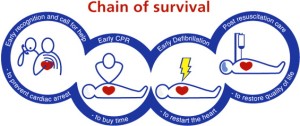When Intensive Care Flight Paramedic and Staying Alive instructor Jason Hunter informed us he was going to complete the Kokoda Track, it seemed obvious we should provide a suitable Automated External Defibrillator (AED) to accompany him – the FRED® EasyPort.
The Kokoda Track saw fierce battles during World War II between the Japanese and Australian forces from July 1942 until January 1943. This was arguably the most significant of battles for Australia, for if the Japanese had captured Port Moresby, it is conceivable the Australian mainland would have been threatened. Over 625 Australians were killed and over 1000 were wounded during this campaign.
Over the past decade the Kokoda Track has become a pilgrimage for Australians of all ages. However, this is no easy stroll. The “Track” is 96km in length, and its elevation ranges from 300m to 2190m above sea level. Located in tropical jungle, the days tend to be hot and humid, and the nights can be bitterly cold.
As the number of Australians taking on this pilgrimage has increased, so has the number of deaths from Sudden Cardiac Arrest. In the past decade there have been 6 reported deaths whilst completing the Kokoda Track, with 4 in 2009. Sadly these deaths illustrate that Sudden Cardiac Arrest can strike anyone, at any age, of any fitness, at any time. The deaths include a 26 year old male, a 36 year old female and a 38 year old male.
When Sudden Cardiac Arrest occurs, early CPR and defibrillation is critical. For every minute that defibrillation is delayed, there is a 7-10% reduction in the chances of survival. However most AEDs would be too large or heavy to to be considered a viable option to carry along this difficult and challenging terrain.
The FRED EasyPort is the perfect AED for this type of challenge. At a mere 490g including batteries, and 133 X 126 X 35mm it easily fitted into Jason’s pack at a time when weight and space were of the essence. It should be noted that unlike many trekkers, Jason did not use porters but rather carried his pack the entire length of the track himself.
For more information on AED programs and First Aid Training provided by Staying Alive please submit an enquiry.







